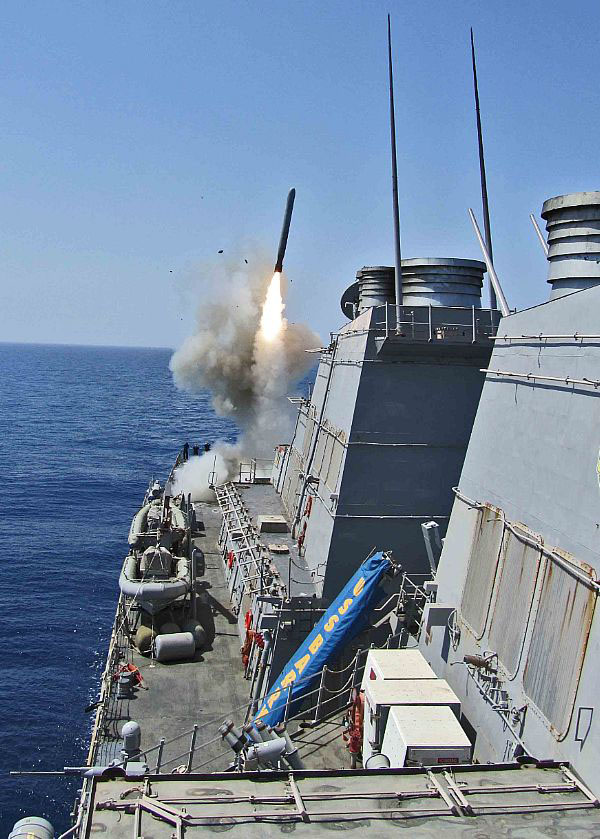Hung Cao – A Navy Diver In The Pentagon Briefing Room
Hung Cao and the Fight to Rebuild America’s Maritime Power Before the Next War Arrives by Captain John Konrad (gCaptain) The first thing you notice about the US Navy’s Undersecretary...

 From Commander, U.S. Naval Forces Europe-Africa/ Commander, U.S. 6th Fleet Public Affairs
From Commander, U.S. Naval Forces Europe-Africa/ Commander, U.S. 6th Fleet Public Affairs
NAPLES, Italy (NNS) — The U.S. Navy, while partnering with joint forces and coalition forces, made several first-time accomplishments During Operation Odyssey Dawn March 31.
During the beginning of Odyssey Dawn, strikes were made against Libyan military sites by coalition forces with Tomahawk Land to Air Missiles (TLAMs), the evening of March 19. Amidst the forces were two U.S. Navy ships and three submarines, including the USS Florida (SSGN 728).
This strike against Libyan forces marked the first time that an Ohio-class guided-missile submarine launched a TLAM in conflict.
“What an accomplishment for the submarine force,” said Capt. Mark Davis, commodore, Task Force 69. “This multi-mission platform can remain undetected, yet provide a full range of capabilities to the commander.”
The following day, U.S. Navy EA-18G Growlers were used against hostile forces for the first time, in conjunction with U.S. Marine Corps AV-8B Harriers, as electronic warfare support jamming enemy transmissions.
Later in the operation, U.S. Navy and coalition units came to aid of the Libyan people to engage Libyan Coast Guard vessel Vittoria and two smaller craft who were firing indiscriminately at merchant vessels in the port of Misrata, Libya, March 28.
Commander, Task Force (CTF) 65, led by Capt. Dan Shaffer, analyzed their collected data to move appropriate Joint Force Maritime Component Command (JFMCC) forces into position to observe real time events, making this operation the first time that a sea combat commander has coordinated and executed a combined strike against hostile naval forces.
Vittoria was engaged and fired upon by a U.S. Navy P-3C Maritime Patrol aircraft with AGM-65 Maverick missiles; the first time that these missiles have ever been fired on a hostile vessel by a P-3C.
“P-3s have provided 24/7 ISR maritime domain awareness critical to the protection of U.S. and coalition surface assets in the JOA since the initiation of Odyssey Dawn,” said Capt. Dan Schebler, commodore, Commander Task Force 67. “This engagement demonstrates the ability of the P-3 to complete the sensor-to-shooter kill chain, in parallel providing a key capability to the Joint Force Maritime Component Commander and the Composite Warfare Commander.”
While in pursuit of Vittoria, USS Barry (DDG 52), part of the Kearsarge Expeditionary Strike Group, and coalition naval forces from the French, Italian, Spanish and United Kingdom navies, contributed to the engagement by keeping merchant and humanitarian assistance vessels away from the engagement area and out of harms way.
Joint Force Maritime Component Command was the maritime component of Joint Task Force Odyssey Dawn and was commanded by Vice Adm. Harry B. Harris Jr.
Photo: (U.S. Navy photo by Lt.j.g. Monika Hess/Released)

Sign up for gCaptain’s newsletter and never miss an update

Subscribe to gCaptain Daily and stay informed with the latest global maritime and offshore news
Essential news coupled with the finest maritime content sourced from across the globe.
Sign Up